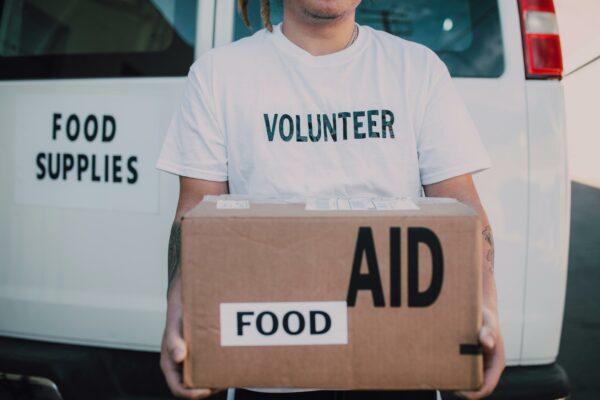The Art of Donation Box Giving
Donation boxes, often situated in shopping centres or resource recovery centres, provide an essential service to those in need. They offer a simple and effective means for individuals to donate unused or unwanted items that can significantly improve the lives of others. The art of donation box giving revolves around the notion of recycling, repurposing, reusing, transforming unwanted items into treasured resources, and giving them new life.
From clothing to household goods, the act of placing these items into a donation box, donation hub, or charity box can mean the world to someone else. Not only does it offer material assistance, but it also signifies a broader collective effort towards social responsibility, demonstrating the power of community support and kindness.



The Power of Clothing and Item Donations
Clothing donations or charity donations have the power to impact lives in meaningful ways. A simple item, such as a warm winter coat, can provide comfort and safety to those who cannot afford one. Similarly, a pair of shoes can make a significant difference in the life of someone who needs to walk long distances for work or school.
But it’s not just clothing that holds power. Item donations, such as kitchenware, furniture, or toys, can help establish a sense of normalcy for families going through tough times. They can turn an empty space into a home, provide tools for cooking meals, and ensure that children still have the chance to play and learn. Such donations are a clear demonstration of the power clothing and item donations hold.
Choosing the Right Products to Donate
When considering what to donate, it’s crucial to remember that the aim is to provide useful, functional items that can improve the quality of life for recipients. Items should be in good condition, with clothing clean and intact, electronics working, and toys complete with all their parts.
It’s also worth considering the appropriate season for clothing donations. For instance, donating coats and blankets during winter can be particularly significant. Just as important is the donation of everyday items such as kitchenware, home decorations, and books, all of which can significantly enhance the comfort and homeliness of the recipients.



Organization and Promotion of a Successful Donation Box
A well-organized donation box is a successful one. This means ensuring the box is clearly marked, accessible, and regularly emptied. It’s also essential to foster a strong relationship with local communities and businesses, who can provide support through promotion and assistance with the collection and distribution of donated items.
Promotion is also a key aspect of running a successful donation box initiative. Engage with the community through social media, flyers and community events to raise awareness and to encourage more people to get involved in the donation process. This not only helps to increase the quantity of donations received, but also to build a stronger, more supportive community.
Different size and types of Donation Box
Donation boxes come in various sizes and types, each designed to serve different purposes and cater to diverse settings. Here are some common variations:
- Basic Donation Box: This is a simple, small-sized box often made of cardboard or acrylic. It’s suitable at events to collection donations, fundraisers, or retail counters.
- Lockable Donation Box: These boxes feature a lock mechanism, using a lockable display usually with a key or combination, to give extra security to the collected funds. They’re ideal for high-traffic areas where security is a concern, such as public spaces or busy events.
- Customized Donation Boxes: These boxes can be tailored to match specific themes, causes, or branding. They may include custom card box graphics, logos, or slogans to attract attention and encourage contributions.
- Large Donation Bins: These are bigger containers designed to collect larger items or bulk donations, such as clothing, food, or toys. They’re commonly used by charities, shelters, or community centers.
- Transparent Donation Boxes: Made of clear acrylic or glass, these boxes allow donors to see the contents inside, which can build trust and transparency. They’re often used in professional settings or locations where visibility is essential.
- Digital Donation Boxes: These innovative boxes incorporate digital screens or interactive displays to engage donors and facilitate electronic payments. They’re becoming increasingly popular in modern fundraising campaigns, offering convenience and versatility.
- Mobile Donation Boxes: These are portable donation stations equipped with wheels or handles for easy transportation. They’re convenient for mobile fundraising events, street campaigns, or disaster relief efforts.
- Themed Donation Boxes: Designed to align with specific causes or events, themed donation boxes feature decorations, colours, or motifs related to the fundraising purpose. They can evoke emotional connections and increase donor participation.
- Weatherproof Donation Boxes: Constructed from durable materials like metal or weather-resistant plastic, these boxes withstand outdoor conditions and are suitable for long-term use in parks, streets, or public spaces.
- Educational Donation Boxes: These boxes provide information or visuals related to the cause being supported, educating donors and raising awareness while collecting contributions. They’re effective for advocacy campaigns or educational institutions.



The Impact and Success Stories of Donation Boxes
The impact of donation boxes is profound, and there are countless success stories that highlight their value. From the family that received winter coats just when they needed them most, to the newly arrived immigrant family who were able to furnish their home with donated items, the positive effects are endless and deeply meaningful.
Donation boxes are about more than just recycling items; they’re about providing support, fostering hope, and encouraging a sense of community. It’s this human aspect that truly defines their success, making the simple act of donating an item a powerful gesture of kindness and inclusion.



The act of donation box giving is a testament to the power of community and the significant impact small acts of kindness can have. Every item donated is a gesture of support, contributing to wider social good and fostering a stronger, more connected society.





